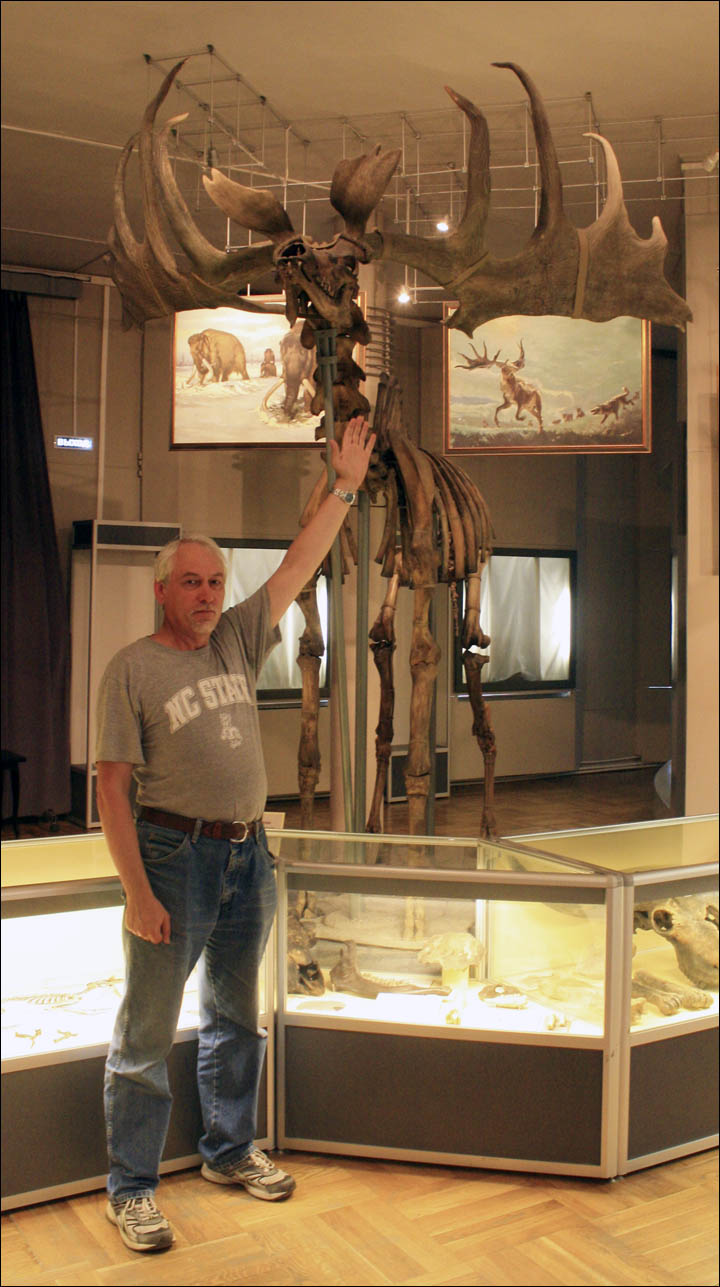 |
| 3/11. Yaroslav Kuzmin and the skeleton of the deer dated back to 7,500 year in the Ekaterinburg Nature Museum. Picture: Yaroslav Kuzmin |
Standing two metres tall, the giant deer was assumed to be extinct about 10,300 years ago, but new research finds it was still alive across Siberia.
A team of Siberian scientists is among those that have contributed to breakthrough research on the extinction of a giant deer that once roamed the Earth.
It had been previously thought that this animal, also known as the Irish Elk, a massive creature that stood 7ft (2 meters) tall and had antlers up to 10ft (up to 3.5 meters) wide, all but died out at around the time of the end of last Ice Age about 10,300 years ago.
Distinctive animals because of their sheer size, they first appeared 400,000 years ago and were common in Ireland, Britain, and mainland Europe and Asia. However now new data suggests not only did they live longer than that, but also survived in Siberia in the Holocene Era, about 9,000 years ago, much further than anyone ever knew.
Indeed, in an article published in the highly-ranked scientific journal, Quaternary Science Reviews, the experts have extended the early Holocene habitat of the animal at least 2,400km to the east.
The development comes following analysis of fossils found at various locations in Siberia. [...] siberiantimes.com/ / Link 2







No hay comentarios:
Publicar un comentario